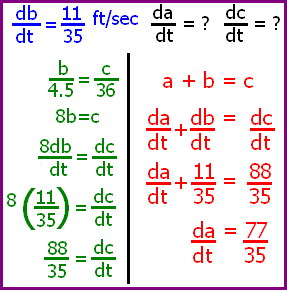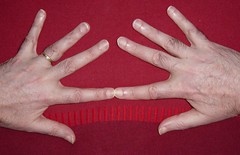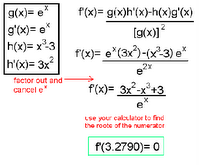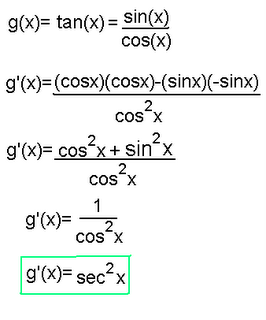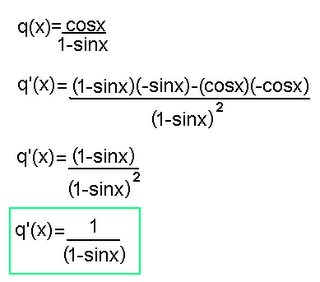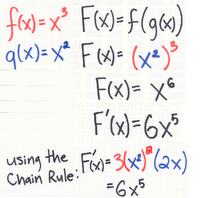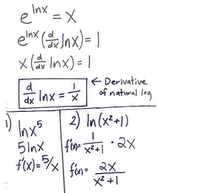November 30, 2006
Scribe Post - Day 53
Anyway back on topic... We started off class with a discussion about our Pedro the Pi-Rate Panda Project, and agreed on certain criteria we are going to follow. Then we were told about the wonderful site Mr.K and Mr.H have put together called studentblogwikitools.wikispaces.com, which has many tools to make a students life much easier online, so click on it and check it out. After we talked about a couple of math contests that offer pretty decent prizes. And lastly we started with the real math.
We began to learn about Newton's Method. Newton's Method is used to approximate the root of any given function.
On the function f(x) = x3 -2x2 -5 for example,
-graph-
the function graphically will look sort of like this.
Then you'd pick a value that you suspect is close to the root. In this example we see that the root is somewhere between x=2 to x=3, and closer to x=3. We chose x=2 for our chosen value, and would find the root of its tangent line at that particular point to try to zero in on our zero of the parent function.
-graph-
To do this we must find the derivative of our given function which turns out to
f'(x) = 3x2 - 4x.
Just plug in the value 2 in both our derivative and parent function for
f'(2) = 4 and f(2) = -5.
Then we would use our point slope formula to determine any equation for any tangent line at a point which looks like f(x) - f(a) = f'(a)(x-a).
And a is the point we're looking at. And since we're looking for the root of the tangent line, f(x)=0 because roots exists only when the y-value is equal to 0.
Now we would just plug in our values to get 0 - (-5) = 4(x-2) and solve for x.
Which then equals to x = 13/4 which is the root of our tangent line at f'(2).
After we use this new number and repeat the process, finding yet another root of a tangent line at that point, and in this case, the root of the tangent line of where f'(13/4). So we would plug it in again in the same formula which generally looks like - f(a)/f'(a) + a = x after you balance the equation. We would repeat the process until the estimate generally stays the same.
On a calculator it is very simple to do, but you must must must know how to do the Newton's Method by hand, as it will probably show up on the exam. On the calculator though you can do this by first:
- plug in both the parent function and derivative function into Y1 and Y2 respectively
- 2nd quit to the homescreen
- compute in -Y1(2)/Y(2) + 2 and store the value in alpha a
- then 2nd enter for the same equation and press enter again, each time for a better estimate
- noticeably the value should tend to remain the same
And that is Newton's Method, which could pretty much be used for any kind of function, you name it.
However it is very important as to which number you choose to pick first to zero in on the root. It isn't the best method if you do not pick the right number as it could just put you in a circle of incorrect roots like as seen in some of these applications here.
And that comes to a closure of my scribe post. I will definitely spice things up and include graphs for a better picture. But right now I had just came back from my volounteer service, and I'm still in my outside clothes, starving to death without dinner. It's getting late, and I still have other homework to do. Sorry for any inconviences, I will fix it up tomorrow night after work. I have covered pretty much everything though, and if not you can tell me =).
Okay next scribe will be Danny because he said he'll do it =].
Pedro the Pi-Rate Panda Project
November 29, 2006
Scribe Post - Day 52
 Today Mr. K started off talking about Scribe Posts and told us to check out scribe posts made by students in Scotland. Heres the link:
Today Mr. K started off talking about Scribe Posts and told us to check out scribe posts made by students in Scotland. Heres the link:http://exc-el.org.uk/blogs/s3scribeposts
We then did questions from the text book.
17. Two sides of a triangle are equal in length, and each increases at the constant rate of 2 in/min. The angle between these two sides increases at the constant rate of 1 rad/min. Determing the rate of change of the third side at the moment that the other two sides are each 10 inches long and their included angle has a measure of π / 2 radians. [HINT: The Law of cosines may be helpful]
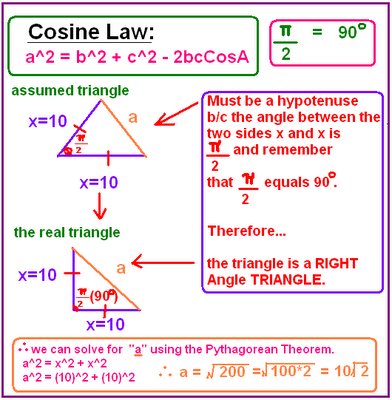
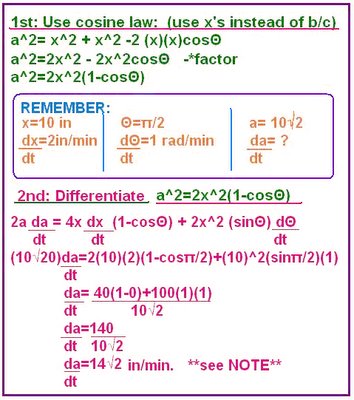
NOTE: I don't think the answer I got is right. I was pretty close though
(da/dt= 14 √2 in/min). I think i did some miscalculations. I was trying to figure out where i went wrong and i still couldn't find the mistake/s . =( Can someone please help me and tell me where i went wrong. That would be greatly appreciated =).....
********Right Answer from back of text: da/dt= 7√2 in/min****************
We then did a group work assignment about Stan the Clause =)
Stan the Clause.
It's Christmas Eve and children are asleep all across the land, waiting for Santa to bring them gifts. However, naughty children will be visited by Stan the Clause in his flying can. Stan is flying over the town in an altitude of 500 feet, heading towards a naughty little boy's house. He is flying at a horizontal speed of 125 mph. Find the rate at which the angle of elevation from the naughty boy's house to the flying can is changing in radians per second when the angle of elevation is
π / 12.
HINT: There are 5280 feet in one mile

Sorry guys for posting late and if my photos are blurry!!!!!!!!!
I pick u Danny for scribe. : )
November 28, 2006
SCRIBE POST: DAY 51
The first one was called BOYS MEETS WEIRD
Borg the turtle was walking across the road (to get to the other side), and a very weird person saw him. Mr. Turtle tried to get away, but alas, he was not so fast. The person subjected Borg to genetic engineering to grow fur on the turtle. Assume Borg is semi-spherical, and the hair grows equally and only on the curved surface. Include hair in the radius and round answers to three decimal places.
1. When the rate of change of the volume is 12 cubic feet per second, and Borg has a radius of 14 ft (he's one huge turtle), what is the rate of change of the radius?
 First, we take what we're given and we state what we're looking for.
First, we take what we're given and we state what we're looking for.Then we find a formula that ties the relationship of all the variables we have .
We take the derivative of this formula, and plug in values to solve the problem.
2. The weird person wanted Borg to be huggable-soft. This occurs when the rate of change of the volume is 1600 cubic feet/second, and the rate of change of the radius is 13 feet/second. When did Borg reach huggable-soft status (give the radius)?
 Willy the Wallaby is a hard worker, but not devoted enough to work at the circus for almost 70 hours building a tank just so he could be shot out of a cannon like a metal ball. He is convinced there is a better job out there (and he wants to at least keep a shred of dignity). So Willy joins up with his friend Roo and his old coach Spike to seek out a tough guy name Wyman Weasel who has been sending out letter for a covert employment operation offering great pay for the ones with enough "guys and smarts" to find the secret hangout. The instructions began at the ingersection of Crim Dr. and Twotough Blvd. The streetlight on that corner is 36 ft off the ground. The only ones who can get the job have to figure out the rate they have to be moving toward the south end of Crime Dr. in order to have their shadow changing length at a rate of 11/35 ft per second. Once the applicant found the rate, the next instruction was to move at that pace and an escort will approach. The escort will take any animal that moves at the right pace to the clubhouse door. The final password to get in is the rate of change of the tip of the shadow. Willy and his friends want your help to finally get the good paying job they deserve.
Willy the Wallaby is a hard worker, but not devoted enough to work at the circus for almost 70 hours building a tank just so he could be shot out of a cannon like a metal ball. He is convinced there is a better job out there (and he wants to at least keep a shred of dignity). So Willy joins up with his friend Roo and his old coach Spike to seek out a tough guy name Wyman Weasel who has been sending out letter for a covert employment operation offering great pay for the ones with enough "guys and smarts" to find the secret hangout. The instructions began at the ingersection of Crim Dr. and Twotough Blvd. The streetlight on that corner is 36 ft off the ground. The only ones who can get the job have to figure out the rate they have to be moving toward the south end of Crime Dr. in order to have their shadow changing length at a rate of 11/35 ft per second. Once the applicant found the rate, the next instruction was to move at that pace and an escort will approach. The escort will take any animal that moves at the right pace to the clubhouse door. The final password to get in is the rate of change of the tip of the shadow. Willy and his friends want your help to finally get the good paying job they deserve.And that my friends brings us to the end of today's class. PHEW! Homework for tonight as I'm sure all of you already know, is EXERCISE 4.7, question 1-9. And just a reminder, we're at the end of the unit soooo you know what that means, get your BOBS up! By the way KATRIN, you're tomorrow's scribe. Goodnight guys =)
November 27, 2006
Scribe Post
Scuba Steve's Slick Bacteria
While on vacation in Mexico, a tanker accident has spolled oil in the Gulf of Mexico. Scuba Steve volunteered to help by spreading oil-eating bacteria which is gobbling 7 ft2/hr. The oil slick has the form of a circular cylindar. When the radius of the cylindar is 250 ft, the thickness of the slick is 0.02 ft and decreasing at a rate of 0.002 ft/hr.
a) At what rate is the area of the circular top of the slick changing at this time?
b) Is the area of the slick increasing or decreasing?
 Now we have to differentiate to find the derivitive of the area.
Now we have to differentiate to find the derivitive of the area.
We didn't quite finish this question so if you're group knows how to solve this fully, please help.
Well our homework for today is the rest of exercise 4.6 Related Rates ODD NUMBERS.
Tomorrows scribe is LINGER!!! :D
November 24, 2006
scribe post
well as usual we started class with a few problems on the board
1) find Dy/Dx @ (1,1) given
....X^3 + X^4 + Y^3 + Y^2 = 4
....X^3 + X^4 + Y^3 + Y^2 = 4
....
....3X^2 + 4X^3 + 3Y^2 Y^1 + 2YY' = 0
....3Y^2Y' + 2YY' = -3X^2 - 4X^3
....
....Y' (3Y^2 + 2Y ) = -3X^2 - 4X^3
....Y' = -3X^2 - 4X^3
.............3Y^2 + 2Y
...
....Y' = -X^2 (3+4X)
........... Y (3Y + 2)...........---derivative of the function
TO FIGURE OUT THE DERIVATIVE @ (1,1) JUST PLUG IN x=1 AND y=1 INTO THE EQUATION
....Y' (1,1) = -(1)^2 (3 + 4(1))
.....................(1) ( 3(1) +2)
....Y' (1,1) = - 7/5
2) Find the equation of the line tangent to X^2 + Y^3 + 2X^3 + 8Y^2 = 3 @ the point (-1 , 2)
....X^2 3 Y*2 Dy/Dx + 2 X Y^3 + 6X^2 + 16Y Dy/Dx = 0
....Dy/Dx (3X^2 Y^2 + 16Y) = -2XY^3 - 6X^2
....Dy/Dx = -2X ( Y^3 + 3X)
...................Y (3X^2 Y +16)-- <--DERIVATIVE OF FUNCTION
PLUG IN X=-1 AND Y=2 INTO EQUATION
....Dy/Dx (-1 , 2) = -2(-1)(2^3 + 3(-1))
................................2(3(-1)^2 (2) +16)
....Dy/Dx (-1,2) = 5/22
TO GET THE EQUATION OF THE TANGENT YOU USE THE point-slope formula
....POINT = (-1,2)
....SLOPE = 5/22
....Y - 2 = 5/22 (X+1)
3) find the equation of the line tangent X^3 Y^2 = Y +2 @ X=1
...X^3Y^2 = Y+2
....LET X=1
....(1)^3 Y^2 - Y -2 = 0
....(Y-2) (Y+1) = 0
....Y= 2...Y= -1
TO FIGURE OUT THE DERIVATIVE OF THE EQUATION
....X^3Y^2 = Y + 2
....3X^2 Y^2 + X^3 (2Y) DY/Dx = Dy/Dx
....2X^3 Dy/Dx - Dy/Dx = -3X^2 Y^2
....Dy/Dx ( 2X^3Y - 1 ) = -3X^2 Y^2
....Dy/Dx = -3X^2 Y^2
.......................2X^3Y -1
NOW YOU HAVE TO PLUG IN THE POINTS (1,2) AND (1,-1)
....Dy/Dx (1,2) = -3(1)^2 (2)^2
............................2(1)^3 (2)(-1)
........................= -4
....EQUATION Y - 2 = -4 (X-1)
....Dy/Dx (1 -1) = -3(1)^2 (-1)^2
.............................2(1)^3 (-1)(-1)
.........................= 1
....EQUATION Y + 1 = X - 1
AFTER PROBLEMS ON THE BOARD WE LEARNED SOMETHING NEW...
picture a smaller square in the center of a larger square
rate = derivative
sidelength with respect to time
Ds / Dt = 2 cm / sec
between the two sqaures these following things will change
- perimeter
- area -> length of sides depends on time
-diagonal
to calculate the perimeter with respect to time
....Dp / Dt = ?
....P = 4S ** S= LENGTH OF SIDES
....Dp / Dt = 4 Ds / Dt
....Dp / Dt = 4 (2)
....Dp / Dt = 8 CM/S
area with respect to time
....Da / Dt = ?
....AREA = S^2
....Da / Dt = 2 S Ds/Dt
....Da / Dt = 4s
SUPPOSE S = 5CM
....Da/Dt = 4(5)
...............= 20 CM^2 / SEC
Mr. K also showed us a presentation about what we just learned. Mr. K will put a link of the website on the blog.
homework section 4.6, questions 1 - 12
the next scribe is CRYSTAL
November 22, 2006
Scribe Post
We started off by looking at this equation:
x2+y2=25
This is not a function, because it is continuous.
x2+(f(x))2
The above equation can be re-written like this, where y is some function of x
(f(x)) is the composite of functions and we can differentiate using the Chain rule.
Since we are finding the derivative, We are finding the derivative with respect to x because we rewrote the function (y) in terms of x.
IN GENERAL:
If you use the chain function to find the derivative of a composite, you find the derivative of f with respect to u. Which looks like this
F(x)=f(u(x))
Original Notation
F'(x)= f'(u(x)) x u'(x)
*new notation*
Leibniz Notation
F'(x) = df/du x u'(x)
= df/du x du/dx
= df/dx
Finding the implicit definition of x2 + y2 = 25
2x + 2yy' = 0
2yy '= -2x
y' = -2x/2y
y' = -x/y
This is the most common way of seeing the Leibniz notation. The x value will be given so all you have to do is plug it in, but to find the y value, we must go back to the original equation to find the y value.
The steps used in the above implicit differentiation requires to think abstract. We must remember y is a composite of functions. Also when a function is given, to write the implicit definition we assume the function can be written in terms of x.
NOTE: When finding the values of y on a function, use the difference of squares. The difference of squares will show the negative and positive values.
Here are questions that we for the last half of the class.
1) find dy/dx @ x=10, for x-2y=4
x - 2y = 4
1 - 2y' = 0
-2y' = -1
y' = 1/2
2)find dy/dx @ x=12, for x - 2y2 = 4
1 - 4y'= 0
1 = 4y'
1/4y' = y' y Dependant
so we go back to original equation and solve for y
12 - 2y2 = 4
8 = 2y2 = 4
4 = y2
y2 - 4 = 0
y= 4, -4
@ (12. 2) y' = 1/8
@ (12,-2) y' = -1/8
3)4x2 + 9y2 = 36
find (1, 4/3 x square root of 2)
8x + 18yy' = 0
9yy' = -4x
y' = -4x/9y
y' (1, 4/3 x square root of 2) = -4(1) / 9(3 x square root of 2)
= -4/(12 x square root of 2)
= -1/(3 x square root of 2)
4)12x2 - 3y2 = 48
24x - 6yy' = 0
yy' = -4x
y' = -4x/y
12x2 = 48
x2 = 4
x2 - 9 =0
x = 2, -2

Hw: 4.5 all odds, flickr pics, tag as apcalc06 and interesting. See post below
CharLENE is our next scribe.
It's All In Your Hands
November 21, 2006
Scribe Post
CHAIN RULE:
F(x) = f(g(x))
F'(x) = f'(g(x))g'(x)
1. Differentiate.




2. f(x) xe-3x
a) find f'

b) find f"

c) determine the interval(s) where f is increasing
(-infinity, 1/3)
d) determine the interval(s) where f is concave up
(2/3, infinity)
3. Given the equation below, solve for y and differentiate
x2 + y2 = 25

IMPLICIT means that it's SUGGESTED without having it IN YOUR FACE!
A circle isn't a function but we can still find the derivative for it by looking at one section of it.
The next scribe is MARK
November 20, 2006
Scribe Post
scribe
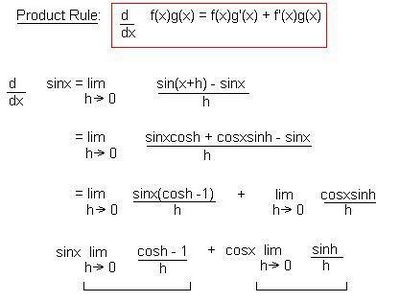

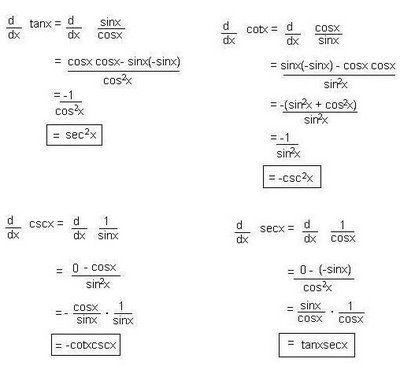
November 19, 2006
November 16, 2006
Scribe Post: Day 44
 Using these roots, we can use the number line test to find which interval is the graph of "f" concave down and decreasing by substituting values on each interval.
Using these roots, we can use the number line test to find which interval is the graph of "f" concave down and decreasing by substituting values on each interval.
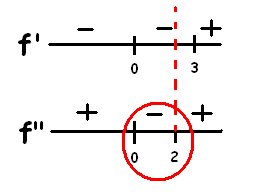
Since the interval (0,2) agrees on both number lines, we can say that on the interval (0,2), the graph of the parent function is both concave down and decreasing.
2. "f" has a domain [-5,5]. The second derivative is shown below.

Solution:

 Mr. K asked, "Can you tell if I'm standing on top of a mountain cliff or on a valley with my face zoomed in the picture??" No, because we're only focusing on his face. We can't tell where he is because we don't pay attention to the surroundings. We can apply this concept on the previous problem. In part (c), could we answer the question if we focus our attention on x=1? If we look around the graph, we could make a better and more accurate conclusion to answer the question.
Mr. K asked, "Can you tell if I'm standing on top of a mountain cliff or on a valley with my face zoomed in the picture??" No, because we're only focusing on his face. We can't tell where he is because we don't pay attention to the surroundings. We can apply this concept on the previous problem. In part (c), could we answer the question if we focus our attention on x=1? If we look around the graph, we could make a better and more accurate conclusion to answer the question.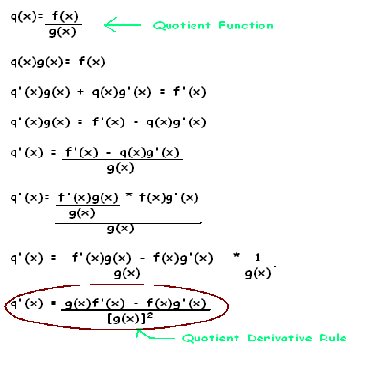
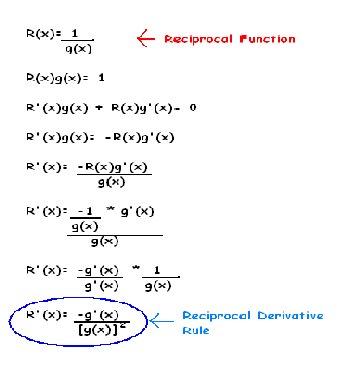 Mr. K told us something to help us remember the quotient rule. LO DI HI MINUS HI DI LO ALL OVER LO LO [key words: HI-f(x) LO-g(x) DI HI(LO)- f'(x)/g'(x)]
Mr. K told us something to help us remember the quotient rule. LO DI HI MINUS HI DI LO ALL OVER LO LO [key words: HI-f(x) LO-g(x) DI HI(LO)- f'(x)/g'(x)]I guess thats about it. Whew, I almost went crazy cuz blogger suddenly went offline on me. I had to start things over again. T.T Anyways, I hope I mentioned everything we did today. Next scribe will be.... uhh... ANH!
November 15, 2006
The Product Rule
1. f(x) = x3 + 2x2 - 8x + 1
Find the equation of the tangent line at x=2
f(2) = 1
f'(x) = 3x2 + 4x - 8
f'(2) = 3(2)2 + 4(2) - 8
= 3(4) + 8 - 8
= 12 + 8 - 8
= 12
equation: y - 1 = 12(x-2)
2. g(x) = x3/2 - x1/2
Find the equation of the tangent line x=4
g(4) = 6
g'(x) = (3/2)x - (1/2)x
g'(4) = (3/2)x1/2 - (1/2)-1\2
= (3/2)(4)1/2 - (1/2)-1\2
= 11/4
equation: y - 6 = 11/4(x-4)
3. Multiply
(x + 3)(2x +5)
 I know that everyone can easily do this problem but this is going to help us derive the product derivative rule. I wasn't taught how to multiply by using "the area model of multiplication" and it probably wouldn't have changed how i multiplied but it will serve its purpose in the next question. Mr.K showed us an example with (x + 3)(2x +5)
I know that everyone can easily do this problem but this is going to help us derive the product derivative rule. I wasn't taught how to multiply by using "the area model of multiplication" and it probably wouldn't have changed how i multiplied but it will serve its purpose in the next question. Mr.K showed us an example with (x + 3)(2x +5)With these areas, we were able to derive the product rule of the derivative.
November 13, 2006
Trying harder, reviewing more OR being more effective?
Chapter 1
I walk down the street.
There is a deep hole in the sidewalk.
I fall in.
I am lost.... I am hopeless.
It isn't my fault.
It takes forever to find a way out.
Chapter 2
I walk down the same street.
There is a deep hole in the sidewalk.
I pretend I don't see it.
I fall in again.
I can't believe I am in the same place.
But, it isn't my fault.
It still takes a long time to get out.
Chapter 3
I walk down the same street.
There is a deep hole in the sidewalk.
I see it is there.
I still fall in.... It's a habit.
My eyes are open.
I know where I am.
It is my fault.
I get out immediately.
Chapter 4
I walk down the same street.
There is a deep hole in the sidewalk.
I walk around it.
Chapter 5
I walk down another street.
Habit 1: Be Proactive®
Take responsibility for your life.
--------------------------------------------------------------

Habit 2: Begin with the end in mind.®
Define your mission and goals in life..
Finally, Habit 3: Rocks, Pebbles, Sand, Water—And Calculus is which?
A time management specialist was asked to give a presentation on her specialty. She decided to do a demonstration. First she asked her assistants to bring a big bucket and put it on the table in front of the audience. Then she asked for large, grapefruit-sized rocks and filled the bucket with them.
"Is the bucket full," she asked?
"Yes!" said the crowd, but she asked for more to put in anyway. This time her assistants brought in pebbles. She poured the pebbles in the bucket and it held a surprising number in the space between the big rocks.
"Now is the bucket full?" she asked.
"Yes!" "No!" "Yes!" "No!" said various persons in the crowd. Some people were uncertain; some were getting suspicious. The time management specialist asked for more. This time the assistants brought her sand. She poured sand in the bucket and it filled the spaces between the pebbles.
"Now is the bucket full?" she asked.
"No!" they answered. By now, everyone was suspicious. So she asked for water and poured in quite a lot. Now no one could think of anything else that could fit in that bucket.
"What does this process demonstrate?" asked the time management specialist.
One member of the audience spoke up: "No matter how busy you are, you can always fit in one more thing."
"I can see how you might think that was my point, but it is not," said the specialist. "I was trying to show you that if you don't put the big rocks in first, you'll never get them in at all!"
Habit 3: Put First Things First®
Prioritize and do the most important things first.
What do you think?
Best,
Lani
And by the way, these come from 7 Habits of Highly Effective Teens by Sean Covey.
Scribe Post: Day 42
f(x) = a x
f(x+h) = a x+h
f ' (x) = lim f(x+h) - f(x) /h
h->0
= lim a x+h + a x /h
h->0
When you graph the parent function and its derivative on your calculator you'll find that the graphs are very similar. The y-intercept of the functions is different. This must mean that there a constant, C, to multiply with that varies the y-intercept.
f ' (x) = C ax
In the table of values, the values of both of the graphs are doubling. In Y3, if you put y2/y1, you will find the constant value. When x = 0, the output is the same.
Try different values of a, and find the constant value , C.
* this is supposed to be my table, sorry if it looks kind of weird *
A C f(x)
2 0.693 f ' (x) = o.693 (2 x)
3 1.098 f ' (x) = 1.098 (3 x)
e 1.000 f ' (x) = 1 (e x) * this is a special number *
4 1.386 ...
5 1.610 ...
6 1.791 you can see the pattern here, so I don't want to type all these eq'ns =)
7 1.941 ...
8 2.077 ...
9 2.197 ...
We are finding the derivative of the parent function at x=0, and that gives us the constant.
_________________________________________________________
f(x) = e x
f' (x) = ex
e x is a special number because it is its own derivative.
_________________________________________________________
Now back to the table. If you plot this on your calculator, the graph looks similar to a square root function, but if you use the stat key on your calculator you can find the accuracy it fits on the graph. A second that fits much much better it the natural log , Lnx.
From this fact, we have found that Ln x is the constant of the derivative at!
eg.
ln2 = 0.693
lne = 1
___________________________________________________
f '(x) = lim a x+h + a x / h
h->0
= lim axah - a x/ h
h->0
* we used the law of exponents above*
= lim a x ( ah-1 ) / h
h->0
* a x was factored out *
= a x * lim (ah-1 ) / h
h->0
* a x was taken out of the limit b/c it will not be affected by h*
f ' (x) = a x * lim (ah-1 ) / h
. h->0
lim (ah-1 ) / h is the derivative of the parent function at x = 0.
h->0
_______________________________
p x has a slope of 1 at x = 0.
lim p x - p 0 / (x-0)
x->0
p x - p 0 / x = 1
p x - p 0 = x
p x = x + p 0
p x1/x = (x+1)1/x
p = (x+1)1/x * graph this on your calculator *
As x -> 0 it approaches e.
e = lim (x+1)1/x
Homework for tonight is 4.2, odd questions. Due for wednesday, I don't if that means to hand in =( ... does it? Anyway, the next scribe is Lindsay.
hehe I thought this was funny...
 thats
thats . like
. my brain
after
. math
sometimes.



